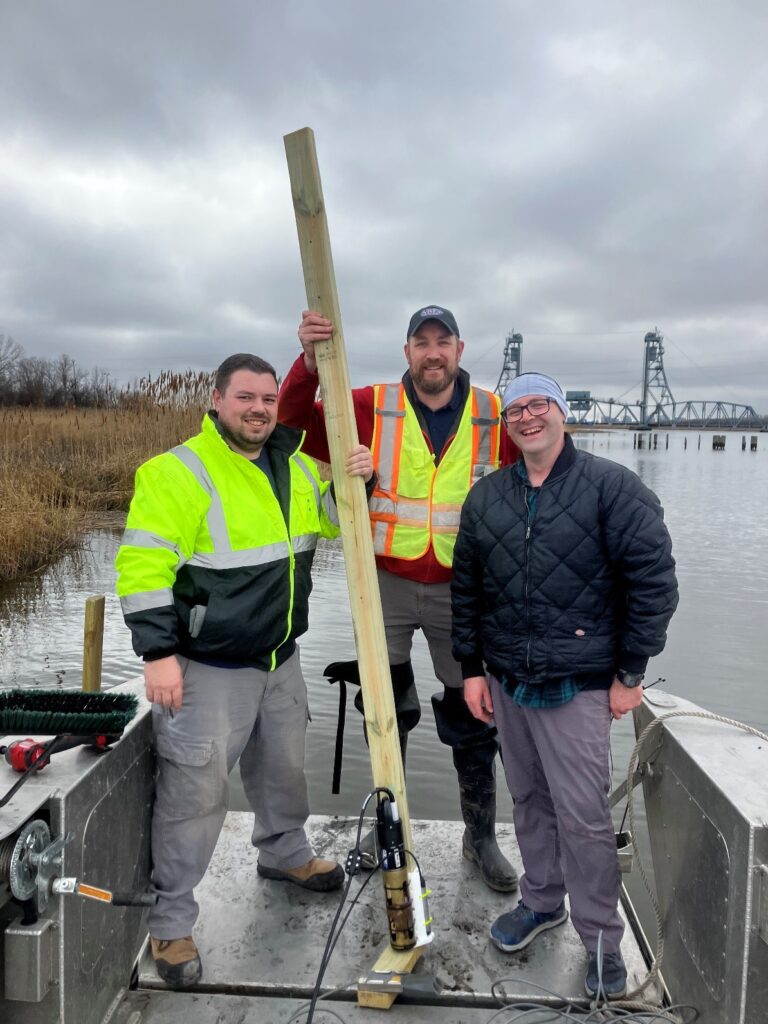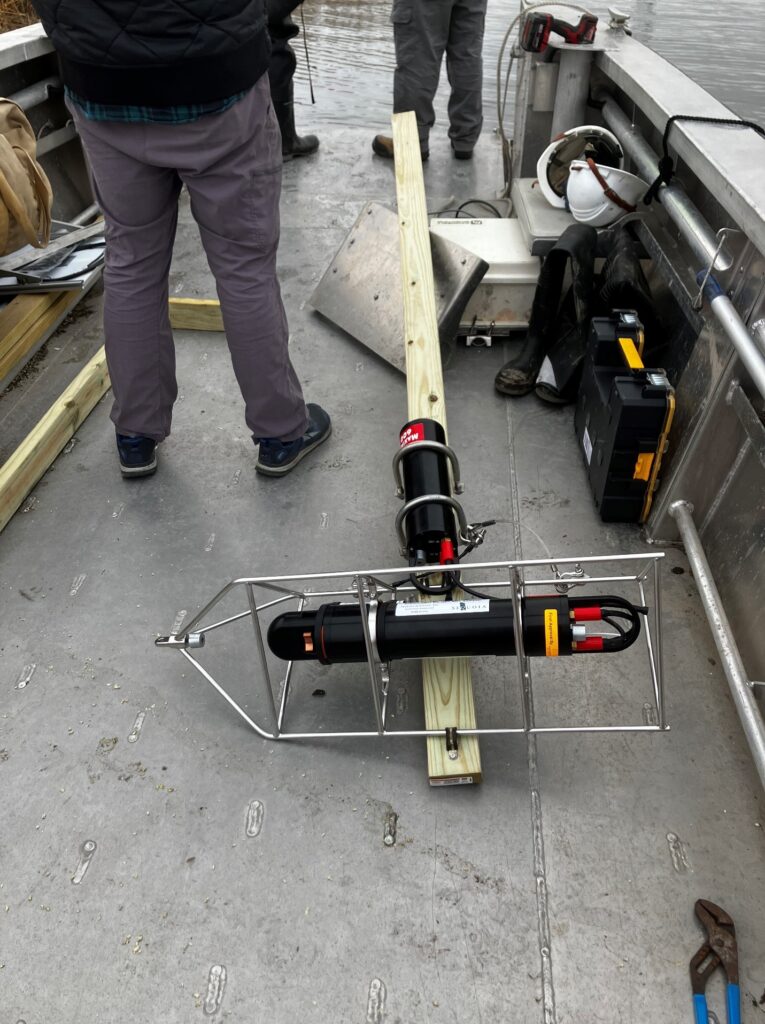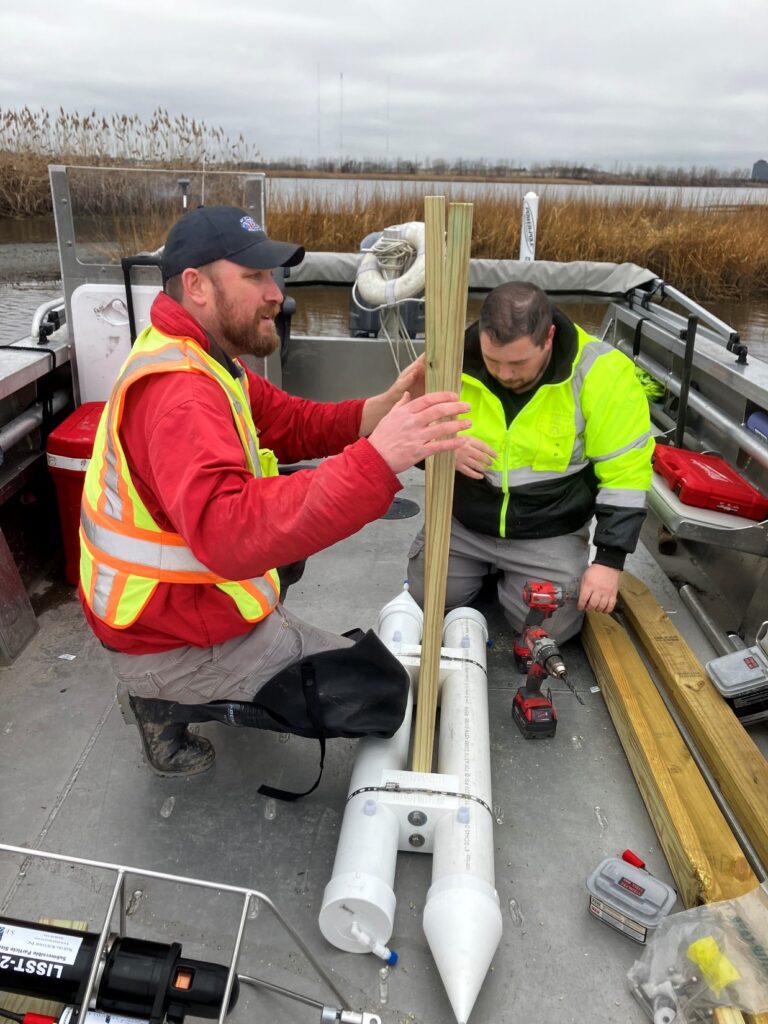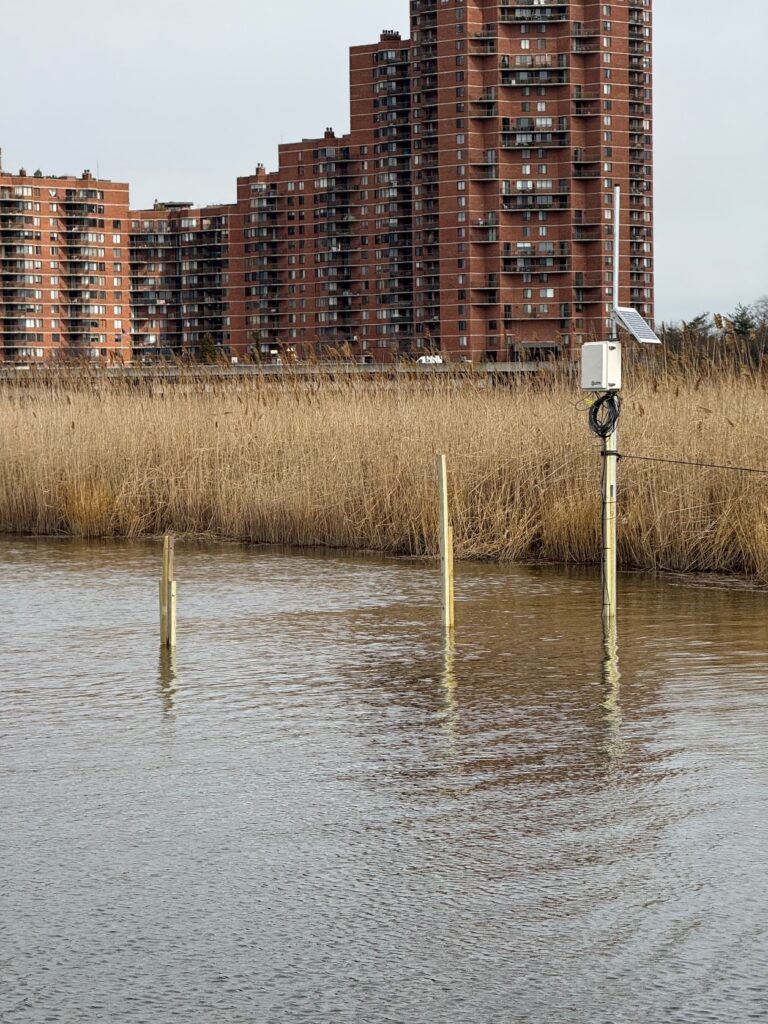MRRI scientists have kicked off the field season by deploying the first of six sediment traps at Anderson Creek Marsh (Secaucus, NJ). A complex cluster of sensors, designed to monitor the mass of sediment carried in and out of the marshes on the back of the tide, were placed into the tidal creek. At every 15 minutes, YSI probes measure basic water quality parameters, such as temperature, salinity, turbidity, dissolved oxygen, and pH. A barometric pressure transducer (YSI) records water levels, and IEI’s BigFoot delivers velocity measurements. The sediment traps are situated about 12 cm above the creek bed and aligned with the flow. The project aims to analyse pollutant exchange between the marsh plane and the main stem of the Hackensack River by collecting the sediment suspended in the water column. In addition a Sequoia submersible particle size analyser will determine the size distribution to better understand the dynamics of pollutant transport.
The monitoring efforts will run for 24 months and will collect a lunar cycle (28days) worth of sediment from six highly contaminated marshes of the Hackensack Meadowlands. At each marsh, the major tidal creek will be sampled twice, once during the leaf off season, and once during the growing season. Results will inform about the direction and concentration of contamination flow between the marsh platform and the Hackensack River.
The project is funded by EPA Region 2’s Wetland Program Plan Development grant.





